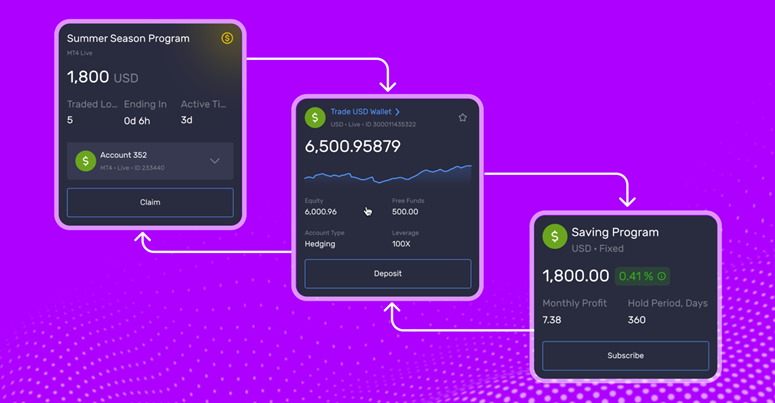Welcome to the comprehensive guide on freeholder building insurance. In this informative article, we will delve into the nuances of buildings insurance, especially tailored for freeholders, and explore how it can provide peace of mind in managing a block of flats.
What is Freeholder Building Insurance?
Freeholder building insurance is a specific type of insurance policy designed to protect the freeholder of a property against various risks associated with owning a building, particularly blocks of flats. This insurance is crucial as it covers the property’s physical structure and common areas. It’s different from standard flats insurance, which typically focuses on the contents within an individual flat.
The Importance for Freeholders
If you own the freehold of a property, particularly a block of flats, it’s essential to have appropriate insurance cover. Freeholder buildings insurance ensures that in the event of damages or accidents, the structure of the building, including the exterior and common parts, are financially protected. This coverage is vital for maintaining the integrity and value of your property.
Key Components of Freeholder Buildings Insurance
- Buildings Insurance Cover: This is the core of freeholder buildings insurance, protecting against damage to the building caused by events like fires, floods, and vandalism.
- Third Party Liability Cover: This component protects the freeholder against legal liabilities if someone is injured on the property.
- Loss of Rent: In cases where damage makes the property uninhabitable, this cover compensates for lost rental income.
- Accidental Damage: This covers unintentional damages to the property.
Why Choose Buildings Insurance for Freeholders?
Opting for buildings insurance for freeholders is not just a safety net; it’s a necessity. Here’s why:
- Protection of Investment: A freeholder invests a significant amount of capital in the property. This insurance shields your investment from unforeseen disasters.
- Legal Requirement: In some cases, mortgage companies require that appropriate buildings insurance cover is in place.
- Peace of Mind: Knowing that you have a robust insurance policy tailored for the needs of a block of flats allows you to manage your property with confidence.
Arranging Buildings Insurance for Your Block of Flats
Arranging buildings insurance for a block of flats requires understanding the specific needs of your property. Here’s what you need to consider:
- Coverage Scope: Ensure that the insurance policy covers all necessary aspects like the whole building, including communal gardens and other external areas.
- Insurance Costs: Compare different policies to find one that offers comprehensive cover at a reasonable cost, factoring it into the annual service charge bill for tenants.
- Insurance Purposes: Clearly understand what the policy covers and any exclusions, especially for complex claims processes.
- Property Owner Liability: As a freeholder, you’re responsible for the safety of the tenants. Ensure that your policy includes property owner liability cover.
Tips for Freeholders
- Review Regularly: Insurance needs can change over time. Regularly review your policy to ensure it continues to meet your requirements.
- Understand the Terms: Be clear about terms like ‘per total claim’ and ‘per incident’ to avoid surprises during claims.
- Employers Liability: If you employ staff for property management, consider including employers liability in your policy.
- In-House Claims Team: Choose an insurer with an efficient in-house claims team for a smoother process during claims.
Tailoring Insurance for Freeholders
Let’s focus on the intricacies of tailoring freeholders buildings insurance. This type of insurance is specifically designed for those who own the entire building, often called blocks, especially in the case of flats.
Choosing the Right Block of Flats Insurance
Regarding block of flats insurance, ensuring that every aspect of your property is adequately covered is crucial. This means assessing the specific needs of your block and making informed decisions about the types of coverage you need.
Key Features of Block Insurance:
- Flats Insurance Cover: This policy covers the block’s individual flats. It’s a vital component of block of flats insurance, ensuring each unit’s structural integrity is protected.
- Freeholder Buildings Insurance Cover: This broader coverage protects the entire building, including common areas and external structures like fences and gates.
- Joint Freeholder Building Insurance: In cases where a property is owned by multiple freeholders, joint freeholder building insurance ensures that all parties are equally protected under one comprehensive policy.
Understanding Cover for Freeholders
Cover for freeholders must be comprehensive, encompassing various aspects of property ownership. Here are some factors to consider:
- Comprehensive Protection: Your policy should cover common risks like fire, flood, and accidental damage.
- Legal Liability: Ensure that your freeholders buildings insurance includes liability cover, protecting you against third-party claims.
- Customization: Each block has unique needs. Customize your freehold buildings insurance to address the specific requirements of your property.
Advantages of Specialized Insurance for Freehold Buildings
Opting for specialized freehold buildings insurance offers several advantages:
- Tailored Coverage: Policies designed specifically for freehold properties or blocks of flats provide more relevant and comprehensive coverage.
- Cost-Effectiveness: By covering the entire block, you often get better value for money compared to individual policies for each flat.
- Simplified Management: Having one policy for the entire block simplifies the management and administration of insurance.
Tips for Effective Freeholder Insurance Management
- Regular Policy Review: Property needs evolve, and so should your insurance. Regularly review and adjust your freeholder buildings insurance cover.
- Understand the Terms: Familiarize yourself with insurance jargon and the implications of terms like ‘referred to as block’ in your policy.
- Collaborative Approach for Joint Freeholders: If you’re in a joint freeholder arrangement, collaborate with your co-freeholders to choose the most appropriate joint freeholder building insurance.
- Seek Expert Advice: Don’t hesitate to consult with insurance experts to get the best cover for freeholders.
Navigating the Landscape of Flats Buildings Insurance
As we delve further into the realm of property insurance, it’s important to understand the nuances of flats buildings insurance and its implications for both leasehold and freehold properties.
Flats Buildings Insurance: A Closer Look
Flats buildings insurance is a specific type of coverage for properties divided into multiple units. This insurance is crucial for protecting the physical structure of the building and the common areas shared by all tenants.
Key Aspects to Consider:
- Freehold of the Property: For those who hold the freehold of the property, ensuring that the entire building is adequately insured is imperative. This includes the individual flats and common areas like hallways and roofs.
- Insurance Policies for Leasehold Properties: Leaseholders may need their own insurance for the interiors of their flats, but the building cover is typically the freeholder’s responsibility. Understanding the demarcation of responsibilities is key.
- Arranging Buildings Insurance Cover: When arranging buildings insurance cover, both freeholders and leaseholders must be clear about what their policies entail to avoid any gaps in coverage.
Landlord Insurance and Freehold Properties
For freehold property owners renting out multiple flats, landlord insurance becomes essential. This type of insurance offers additional protections tailored to the needs of landlords.
Essentials of Landlord Insurance:
- Coverage for Multiple Flats: Landlord insurance policies for properties with multiple flats should cover the entire building and typically include liability coverage for the landlord.
- Standard Block Insurance Policy: This policy is often a comprehensive solution for landlords, covering the physical structure and common areas, and sometimes including provisions for alternative accommodation for tenants in case the property becomes uninhabitable.
- Alternative Accommodation Cover: A key feature in many landlord insurance policies is providing alternative accommodation, ensuring tenants have a place to stay if the property undergoes major repairs.
The Importance of Selecting the Right Policy
Choosing the right insurance policy requires careful consideration. Whether it’s flats buildings insurance cover for a block of flats or a standard block insurance policy for a landlord, the right choice depends on several factors:
- Recognised Independent Price Indices: Use these indices to gauge the appropriate coverage levels and ensure you’re not underinsured or overpaying.
- Only One Excess: Look for policies that offer a single excess for claims, simplifying the claims process and potentially reducing costs.
- Freeholders Building Insurance: For freeholders, selecting a policy that comprehensively covers the entire building, including all flats and common areas, is crucial.
Tips for Effective Insurance Management:
- Assess Your Needs: Determine the specific needs of your property, whether it’s a leasehold or freehold, and choose a policy that addresses those needs.
- Stay Informed: Keep abreast of changes in property insurance regulations and market trends to ensure your coverage remains relevant and adequate.
- Review Regularly: Review your insurance policies to ensure they still meet your needs, especially if there have been property changes or usage.
Securing the Future with the Right Insurance
In summary, understanding and choosing the right insurance policy is paramount whether you are a freeholder managing a block of flats, a leaseholder in a multi-unit building, or a landlord renting out multiple properties. It protects not just the physical structure of your property but also your financial investment and legal responsibilities. By carefully evaluating your needs, staying informed about market trends, and regularly reviewing your coverage, you can ensure that your property, tenants, and investment remain secure under appropriate insurance. Remember, the right insurance is not just a safety net—it’s a cornerstone of responsible property management.
Frequently Asked Questions
Do I need building insurance for a freehold flat?
Yes, if you own a freehold flat, you need building insurance to protect the structure of your property and cover any liabilities or damages that may occur.
How does building insurance work with share of freehold?
Building insurance typically covers the entire building in a share of freehold arrangement. It is arranged collectively by the freeholders, ensuring that all parts of the property, including shared spaces, are protected.
Does a freeholder need building insurance?
Yes, a freeholder needs building insurance to protect against structural damage to the property and to cover any liabilities associated with property ownership, such as injuries occurring on the premises.
What does freeholder building insurance cover?
Freeholder building insurance covers the physical structure of the building, including walls, roofs, and common areas, and typically includes liability coverage for injuries or damages occurring on the property.

















 Bitcoin
Bitcoin  Ethereum
Ethereum  Tether
Tether  XRP
XRP  Solana
Solana  USDC
USDC  TRON
TRON  Lido Staked Ether
Lido Staked Ether  Cardano
Cardano  Avalanche
Avalanche  Toncoin
Toncoin